
SCW Spotlite: Issue 30
Cueing Hierarchy | Go Big or Go Home, Live Stream MANIA® | Forging Function and Performance | Get Stronger with WATERinMOTION® | The Move You Never Knew You Were Doing Wrong | Training Your Body for Its Most Physical Event | Incorporating Technology into Your Clients and Business | My Fitness Journey From Fonda Dats To Covid Days | Success Factors for Weight Loss

Cueing Hierarchy: Organizing and Prioritizing Thoughts into Words
by Stephanie Lyons
Diversifying and organizing verbal cues is a close second to planning your class choreography. Words have a direct impact on movement. Cohesive verbal cues provide for a safer, more effective, and smooth flowing class. But with so much to say, how can we as instructors organize and prioritize our thoughts? Here are a few guidelines and recommendations to help your classes flow smoothly.
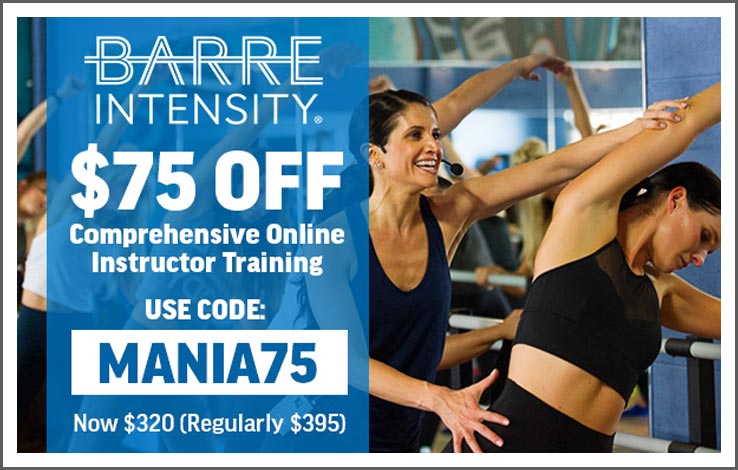 First, it is important to SET UP the class. Learn how to switch from the current exercise to the move you want to do next. Keep the transition quick, seamless and smooth. Cues, in this set up category, need to be action oriented, direct and to the point. They include only the most vital alignment cues while leaving the rest of the words for the action about to take place. Avoid “filler” words during your set up such as “now we’re going to” or “ok next let’s.” Filler words eat up precious transition time and add no value to the movement.
First, it is important to SET UP the class. Learn how to switch from the current exercise to the move you want to do next. Keep the transition quick, seamless and smooth. Cues, in this set up category, need to be action oriented, direct and to the point. They include only the most vital alignment cues while leaving the rest of the words for the action about to take place. Avoid “filler” words during your set up such as “now we’re going to” or “ok next let’s.” Filler words eat up precious transition time and add no value to the movement.
After the setup, it’s time to ALIGN. Head to toe alignment cueing can be applied to all exercises, regardless of where the movement is taking place. The ears in relation to the shoulders, the shoulder in relation to the hips, the hips in relation to the knees, the knees in relation to the toes – all of these nuances make for a safer and more effective workout.
Now that you’ve got your class lifting, bending or squeezing and in proper form, begin connecting the mind with the body. CLARIFY to your students what they are doing and why. Review the intended muscles being engaged, discuss where the movement should be happening and where it should not. Create imagery to tap deeper into the action. Revisit step two, align, as necessary.
By this point it’s the end of the series and the class is in need of a pick me up. From our facial expressions to the tones in our voice, we all have many ways to MOTIVATE our classes. Evoke emotion like “I know you have it in you”. Use the space you’re in. Walk over to the person who thinks they are unnoticed in that corner of the classroom. Take your personality a little outside of your own comfort zone and turn that “umph” into “triumph”.
It’s important to note, although MODIFICATIONS are last to be mentioned, they are our “wild card.” Sometimes they are needed towards the start of an exercise, especially when we know we have mixed levels in the room, and other times we use them at the end when fatigue sets in. Providing modifications, or options as we like to call it, keeps your entire class feeling included. Many group fitness classes, especially those using music, move at a quicker pace and provide little to no breaks. We want all our students to feel a part of the class and able to accomplish a great workout. Make sure you’re giving those options even when no one is asking to create a welcoming environment.
Barre Intensity® is proud to be a Premier Sponsor for SCW Live Stream MANIA®. To learn more about Barre Intensity training and instruction, join Stephanie Lyons in the Sponsor Showcase and take advantage of the coupons and discounts available.
Share this Post!
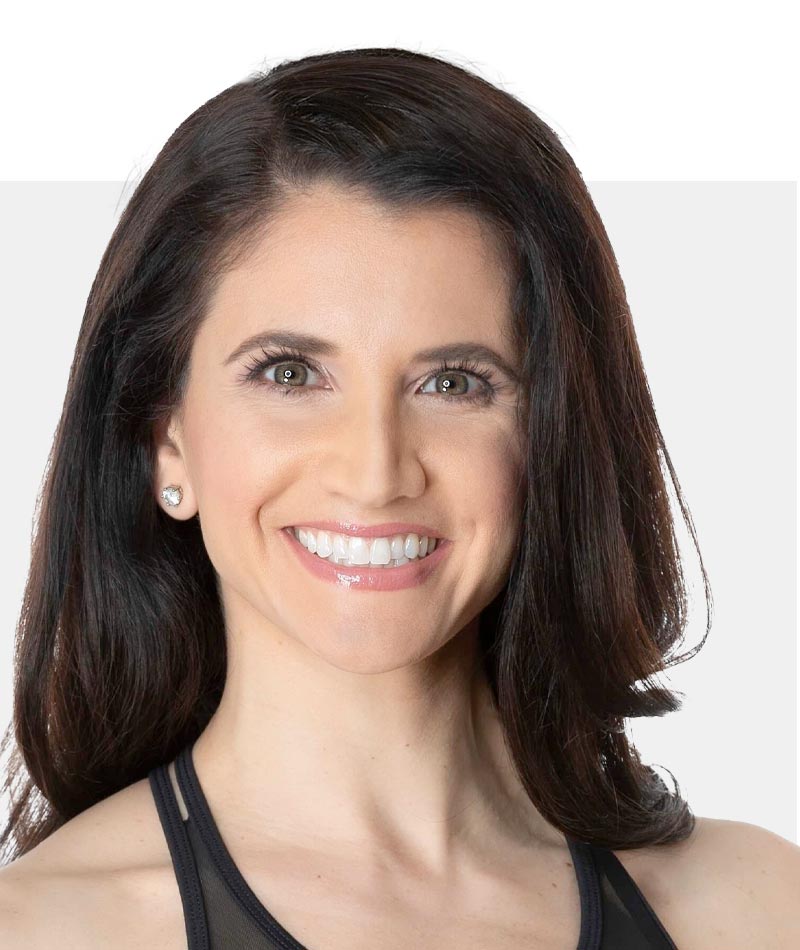 About the Author, Stephanie Lyons
About the Author, Stephanie Lyons
Stephanie is the President of Barre Intensity, a brand focused solely on barre fitness education. She is the author of the Barre Intensity Comprehensive and Essentials Instructor Training Manuals and a contributor to the Barre Anatomy and Barre Pre & Postnatal material. Stephanie is a regular content creator/contributor to Barre Intensity’s on demand video platform, Barre Now, which houses barre classes and certification courses. With a background in business and a passion for fitness and education, Stephanie has been able to fuse together the best of her worlds and share her love of barre with people across the world.

Go Big & Stay Home, SCW Live Stream MANIA®, Even Better in the New Year
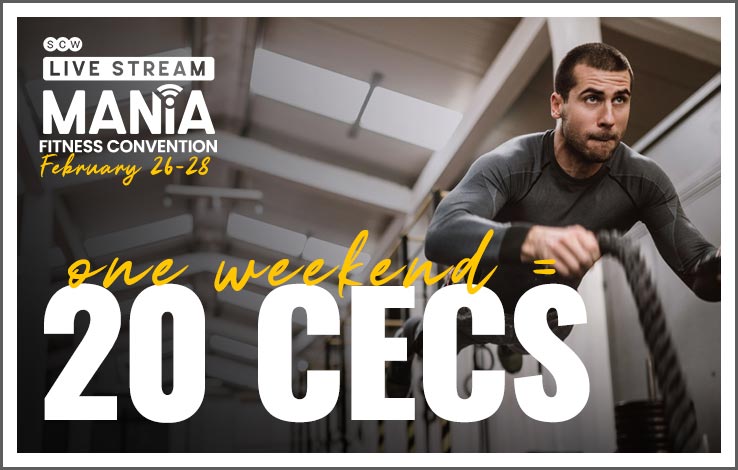 SCW’s wildly successful Live Stream MANIA® is back and better than ever! This February 26th through 28th, join us for a LIVE, jam-packed weekend of inspiration and education. Choose from 180 activity and lecture sessions, 17 highly recognized certifications, presented by 93 of the industry’s top presenters; all while earning 20 CEUs/CECs from NASM, ACSM, ACE, AFAA, AEA, SCW, and more. Have a burning question you just HAVE to ask? No problem! Attendees will have live, unrestricted, real-time access to fitness experts, leaders, pioneers, and innovators from around the globe, including:
SCW’s wildly successful Live Stream MANIA® is back and better than ever! This February 26th through 28th, join us for a LIVE, jam-packed weekend of inspiration and education. Choose from 180 activity and lecture sessions, 17 highly recognized certifications, presented by 93 of the industry’s top presenters; all while earning 20 CEUs/CECs from NASM, ACSM, ACE, AFAA, AEA, SCW, and more. Have a burning question you just HAVE to ask? No problem! Attendees will have live, unrestricted, real-time access to fitness experts, leaders, pioneers, and innovators from around the globe, including:
- Gail Bannister-Munn- FST Coach for the NY Jets
- Lynne Brick, BS.R.N- Co-Owner of Brick Bodies
- Dr. Gregory Charlop, MD- leading TV expert on health & wellness
- June Kahn- internationally recognized industry educator & published author
- Bill McBride- Co-Founder, President, & CEO of Active Wellness and former Chairman of IHRSA’s Board of Directors
- Doris Thews- 2019 World IDEA Fitness Instructor of the Year
“I was truly impressed and blown away with ‘online only’. I am not one to usually use this type of format, so I was so impressed with the quality and ways the presenters modified and changed things up to make it as real and as engaging as possible.” Said Terri T., Live Stream Attendee. “I would do this again if the opportunity passes my way again.”
The Live Stream MANIA® Convention will offer 12 educational tracks from areas of specialization including Active Aging, Recovery/Mind/Body, Functional Training, HIIT, Aquatic Programming, Nutrition, Exercise Science, and Business all for the low price of $159. Don’t want the party to end? Register at the All-Access level and party for an additional 60 days! Attendees who register at the All-Access level ($199) will have the ability to view all 180 recorded sessions for 60 days after the event, as well as attend the live portion of the convention.
Need more than 20 CECs? SCW has you covered. Earn additional CECs from 17 pre-convention certifications, such as Active Aging, Aqua Exercise, Corrective Exercise, Functional Training, Nutrition Coaching for Fitness Professionals, Virtual Training: Lights, Camera, Action!, Personal Training, Yoga, Social Media, and more.
“As always your organization did a phenomenal job of accommodating our fitness CEU needs during this difficult time.”
– Vanessa R.- Live Stream MANIA® Attendee
SCW Live Stream MANIA® gives you the most value for the best price, period. The new year is the opportune time to redefine your place and strength in your career. Refresh your education, revise your 2021 business plans, and retire old mindsets, with the industry’s top presenters, internationally recognized certification programs, and the backing of the continuing education and certification organization of choice for fitness professionals.
Don’t be tardy to the party! Register now to secure your spot and take advantage of special discounts at www.LiveStreamMANIA.com/February.
See you there!
Share this Post!

Forging Function and Performance: A Master Trainer’s Approach to Changing the World with Training
by Kevin Mullins, CSCS
The fitness industry is cluttered with programs and professionals positioning to be the most absolute authority in their niche or genre. In the race to be noticed, trainers and coaches are developing brand statements that place them at one edge of the spectrum or the other.
On one side of the equation, you will find trainers focused only on improving the performance and fitness metrics of their client. Little concern is given to pain, mobility, segmental stability, or enhancing total movement capacity. Success is measured by the pounds you lose, the muscle you build, the increased lifting totals, or the faster racing times – and little else.
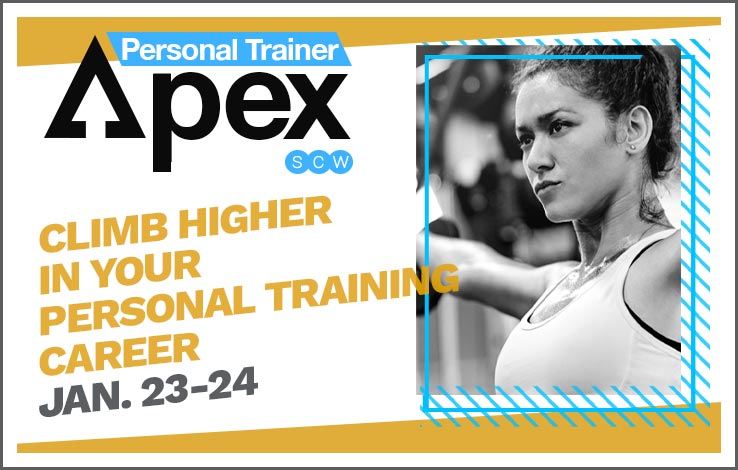 Then, you will find the functional gurus at the other end of the spectrum. Obsessed with symmetry, balance, and forging movement with the finest edges – trainers with absolute functional focuses are less concerned if the scale shifts, if you look better in the mirror, or if you are happy with your physical abilities. They are talking about “function” only.
Then, you will find the functional gurus at the other end of the spectrum. Obsessed with symmetry, balance, and forging movement with the finest edges – trainers with absolute functional focuses are less concerned if the scale shifts, if you look better in the mirror, or if you are happy with your physical abilities. They are talking about “function” only.
Each avenue is advertised as the superior option for a fitness consumer with dogmatic marketing and eager rebuttal of the methodology practiced by anyone outside their camp. It is as if the two cannot go together.
And yet, they are meant for one another…
As most coaches in the industry would attest – function and performance are synergistic areas of emphasis in any successful training program. In fact, it is necessary to feature both if you want to design a program that delivers results in the short-term and long-term.
A client should experience a life without nagging pains and injuries, enjoy optimal joint mobility and segmental stability, as well experience a wide variety of movement possibilities. That very same client should also be challenged to develop their metabolic pathways, increase their muscle mass, and experience a life complete with strength, power, and agility.
Unfortunately, acknowledging how they go together is much easier than knowing how to merge the two practices together into a single program. For decades coaches have been trying to address functional concerns while simultaneously pushing their clients to achieve performance and fitness-based success. Some have succeeded, but most have come up short.
To many coaches, trying to improve a client’s function and performance ability is like trying to put out two separate fires in the same kitchen – possible, but stressful, scary, and deeply challenging. Without a deeper understanding of the anatomy, physiology, kinesiology, biomechanics, and program design principles – coaches are left with a myriad of questions and no answers:
- How can you possibly focus upon someone’s shoulder mobility and scapulohumeral rhythm while also increasing their pull-up repetition total and adding 2-3 pounds of muscle to their upper limbs?
- How does a coach finally get a client to understand how to hip hinge, eliminate low-back-pain, and deadlift 100 pounds higher than their previous best?
- How do I help someone build muscle in their legs and burn fat around their midsection when their hips are tight, and their knees hurt during squats and lunges?
These questions are very real – just as real the problems clients face daily; the very same problems that have brought them to us, the fitness professional, in the first place. The answers to these questions and the solutions to these problems are typically as unique and specific as the client’s themselves.
But with a deeper dive into the sciences, program design, and exercise selection – every fitness professional can make better decisions that benefit their clients in all matters function and performance.
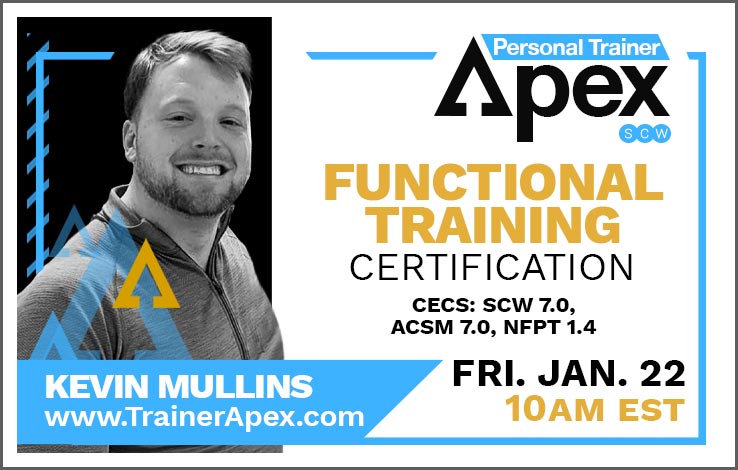 Your Client’s Problems Require Smarter Solutions…
Your Client’s Problems Require Smarter Solutions…
Every successful fitness professional has invested time, energy and money into opportunities that help them better understand the foundational sciences that are always a factor. Some have college degrees, others have advanced certifications, and some have made learning a personal adventure that will never provide credentials on a piece of paper.
Regardless of how they achieved their mastery, all exceptional coaches understand the “order of operations” as it applies to learning about the human body, training, function, and performance. Much like an expensive piece of technology there is hardware, software, input language and programming language – an analogy credited to Pete McCall of the All About Fitness Podcast.
This is the master’s playbook to forging function and fitness:
The Hardware:
- Anatomy and Physiology
- Kinesiology and Biomechanics
The Software:
- Human Adaptation Principles
- Foundational Movement Patterns
The Programming Language:
- Periodized Program Design
- Functional Warmup and Cooldown Design
The Input Language:
- Coaching
- Goal Setting and Communication
The Hardware:
Every coach who has gone deeper on the anatomical design and physiological function of the human body has emerged more capable. Knowing how muscles function, where they attach, what motions they are responsible for, and how the body translates forces through the skeletal structure is imperative to ensuring that all performance and fitness efforts in a training session (or class) honor the “laws” of functionality.
For example, each of the scapula’s 6 dynamic functions are related to at least one motion at the glenohumeral joint. This relationship, known as scapulohumeral rhythm is the critical functional component that underlies excellence in all actions at the shoulder complex (including pull-ups, overhead pressing, handstands, and bench press).
Furthermore, diving deeper into the fields of physiology, kinesiology, and biomechanics provide context-specific insight into how the body reacts to exercise. Understanding metabolic pathways, muscle fiber recruitment principles, and how the body produces, reduces, and transduces forces provides the framework to challenging sessions that deliver performance and fitness results.
 For example, how the body interacts with solid objects directly influences the vector forces – the line of force that runs through the body. This is why elevating your hands in a push-up makes them easier or using a sumo stance in a deadlift seems to target your glutes more intensely. This principle, known as ground reaction force, is also a measure of efficiency and force production in jumping, running, and other athletic patterns.
For example, how the body interacts with solid objects directly influences the vector forces – the line of force that runs through the body. This is why elevating your hands in a push-up makes them easier or using a sumo stance in a deadlift seems to target your glutes more intensely. This principle, known as ground reaction force, is also a measure of efficiency and force production in jumping, running, and other athletic patterns.
The Software:
The foundational movement patterns (hinge, squat, unilateral lower limb, pushing, pulling, rotation, core stability, and gait) are at the center of all exercise. Studying them provides us insight into the critical elements that make an exercise, or that training pattern, effective and safe. There are levels of motor control and skill required to progress these patterns into the higher tiers.
For example, many people begin by doing squats with a barbell on their backs because they have seen it done that way in magazines, by other trainers, and even their friends. It has become the norm. Yet, the barbell back squat is the pinnacle expression of squatting – and should only be done those who have mastered the previous tiers of the pattern to ensure optimal performance and functional return on their investment of time and energy. Those tiers are specific and refined.
The Programming Language:
Every device you own has a programming language – a way it talks to itself and other devices – as well how it functions in your possession. For a fitness professional, the programming language is the ability to prescribe long-term exercise programs that consider all a client’s needs, wants and abilities. It is the sets, reps, exercise selections, load prescriptions and microcycle construction tactics.
For example, the best training programs for weight loss should not begin with calorie-expensive cardio efforts. Instead, there should be a muscle and strength building phase that increases muscle mass and neurological efficiency – two adaptations that directly improve weight loss. Increased muscle mass increases the basal metabolic rate (muscle burns more calories than fat) and increased neurological efficiency makes them feel more comfortable exercising , which is less self-conscious around you.
The input Language:
Every device can have its input language changed to match the consumer. On a TV it is the language that you see on the screen. In fitness – it is the language you use with your clients – something unique to you and them.
A busy coach might change their input language multiple times per day – each time to meet their client where they are on their journey. Just the same, that coach might have a quite different input language than her peer standing next to her, because language is also unique between the coaches.
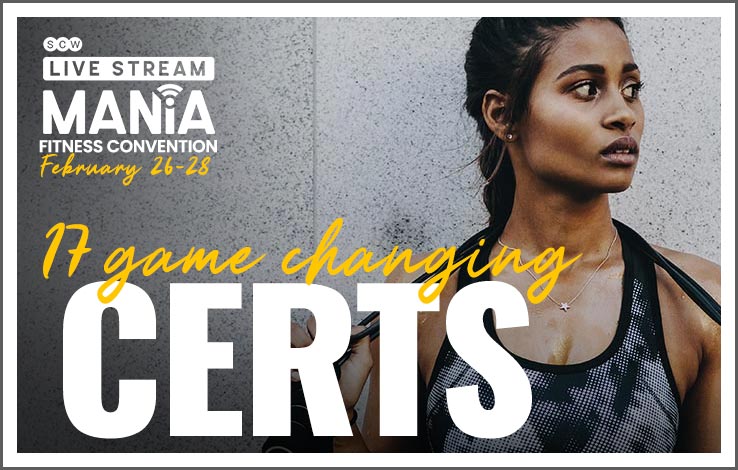 A great example of this is how you would coach a hip hinge to an older client with some hip pain when compared to a football player. You might say “imagine closing a car door with your butt as you carry the groceries inside” to the older client and “imagine you are about to get a handoff and run forward” to the football player. The message is the same – hips back – but the presentation, or input language, is radically different.
A great example of this is how you would coach a hip hinge to an older client with some hip pain when compared to a football player. You might say “imagine closing a car door with your butt as you carry the groceries inside” to the older client and “imagine you are about to get a handoff and run forward” to the football player. The message is the same – hips back – but the presentation, or input language, is radically different.
You can Go Deeper.
SCW is proud to launch the new Functional Training Certification. Spend 8 hours exploring these sciences, learning new training moves, and building better programs under the counsel and coaching of your master trainer. Beginning at Personal Trainer APEX – you can sign up and begin delivering better results for clients that enhance their function and their performance. For more sessions and certifications with Kevin Mullins, join him at SCW Live Stream MANIA®, February 26-28.
Remember this, who you are as a fitness professional is only measured by how you help others. If it is only about your body – then you are a fitness model, or “talent”, as they’d say in Showbiz. There is nothing wrong with that title either – but it isn’t the same as a trainer, coach, or therapist. Being an elite fitness professional requires a tireless commitment to education and personal growth so that you can help others achieve what they thought was impossible.
See you at the certification.
Share this Post!
 About the Author, Kevin Mullins, CSCS
About the Author, Kevin Mullins, CSCS
Kevin Mullins, CSCS, is a fitness professional, educator, and author who has coached over twenty-thousand personal training sessions and group fitness classes in the last decade. He is the author of best-selling Personal Training book – Day by Day: The Personal Trainer’s Blueprint. The creator of SCW’s Functional Training Certification, Kevin leverages his degree in Kinesiology from the University of Maryland as well as accreditation through the PPSC, USAW, Precision Nutrition, EQUINOX, NSCA, Trigger Point Therapy, ISSA, and Schwinn Cycle to every event.

Get Stronger With WATERinMOTION®
by Kelly Jones
We’re celebrating our 10th birthday, but your club is getting the gift. WATERinMOTION® is proud to announce the release of a brand-new program guaranteed to make waves: WATERinMOTION® Strength.
WATERinMOTION® Strength is a unique program focusing on muscle endurance, power, and overall toning in a 45-minute workout using aquatic dumbbells. This groundbreaking workout harnesses the properties of water, building lean muscle through the creative use of drag, resistance, and buoyancy.
“With the innovative use of aqua dumbbells, our WIM Strength program brings another dimension to your aqua exercise schedule.” Said Cheri Kulp, Creator of WATERinMOTION® Strength. “Get ready to experience the newest high energy workout all packed into 45 minutes your participants are sure to love!
 The impact is low, the intensity is high, and the fun is never-ending! WATERinMOTION Strength® includes dynamic, quality mixed music from popular artists. Sing your hearts out and increase muscle and cardiovascular endurance through series of short, intense rounds of work. Certified WATERinMOTION® instructors receive new music and choreography every three months, keeping students engaged and educated, maintaining the integrity of the program with each release.
The impact is low, the intensity is high, and the fun is never-ending! WATERinMOTION Strength® includes dynamic, quality mixed music from popular artists. Sing your hearts out and increase muscle and cardiovascular endurance through series of short, intense rounds of work. Certified WATERinMOTION® instructors receive new music and choreography every three months, keeping students engaged and educated, maintaining the integrity of the program with each release.
“I’m excited to release WIM Strength. The program uses the best practices of our well-established WIM Original and Platinum formats and applies them to a fun and creative muscle-focused aquatic workout.” Said Connie Warasila, Creator and Choreographer of WATERinMOTION® Original. “It’s simple enough to follow and challenging enough to be a valuable use of your exercise time.”
Aquatic Managers and Pool Owners will be amazed at the tidal waves of change this revolutionary new program will bring to their aquatic programming. WATERinMOTION® Strength will attract new populations into the pool, drawing in extra income and maximizing the pool’s potential. Even land lovers will rejoice. WATERinMOTION® Strength is complete with choreography to challenge all participants, regardless of fitness ability, while mitigating muscle overuse and injury, and improving flexibility, endurance, and recovery time.
“Since the CDC (Center for Disease Control) has announced that pool chemicals have 6-times the strength to kill the coronavirus, water exercise is the perfect solution to inactivity, illness and obesity. WATERinMOTION Strength is SCW Fitness Education’s answer to improving the strength of an aging population as well as providing a creative solution to overall health,” says CEO, Sara Kooperman, JD.
Put on your swimsuit, grab your dumbbells and towel, and RSVP now for the most epic pool party of the year!
For more information about WATERinMOTION® Strength or WATERinMOTION® visit our website at www.WATERinMOTION.com.
Share this Post!

The Move You Never Knew You Were Doing Wrong: Forward Lunge
by Brook Benten, M.Ed
Many of us have been exercising for as long as we can remember. But sometimes, seemingly obvious exercises need a tune-up. Over the next several issues, we will dive in to a series of moves that you never knew you were doing wrong. This edition covers the Forward Lunge.
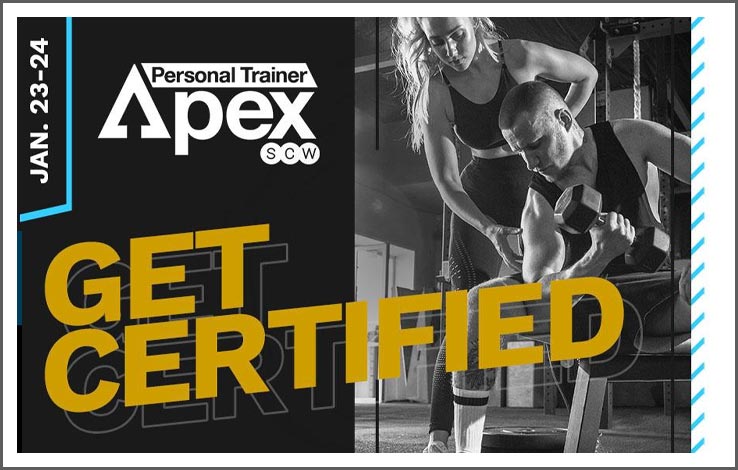 Whether you’re doing your first Tabata boot camp, or five-thousandth repeat of a 1985 workout video, you have done forward lunges. Forward lunges have a lot going for them: they’re metabolic, multi-muscle/multi-joint, bodyweight only (or can be), and they’re fantastic for lifting and toning the butt! But the downside is that many people turn the knee in, putting unnecessary strain on the joint.
Whether you’re doing your first Tabata boot camp, or five-thousandth repeat of a 1985 workout video, you have done forward lunges. Forward lunges have a lot going for them: they’re metabolic, multi-muscle/multi-joint, bodyweight only (or can be), and they’re fantastic for lifting and toning the butt! But the downside is that many people turn the knee in, putting unnecessary strain on the joint.
A properly performed lunge forward will align the hip, knee, and ankle in the sagittal plane (think railroad tracks). Without mindfully tracking the knee with the toes when the foot lands forward, may naturally turn the knee inward, throwing off alignment. (knocking the train right off the tracks!) I say “naturally,” because depending on how your femur (thigh bone) fits into your acetabulum (hip socket), you may have what’s called a “natural turnout.” Here’s a quick test: if you stand up straight, barefooted, and shake your legs out, then plant your feet where they naturally fall, you can look down and you’ll notice if your feet landed forward or turned out. A woman’s pelvis is shaped wider and broader than a man’s and that differently-shaped bone may affect the hip’s ball-and-socket joint. Most women have a natural turnout.
We (myself included) can say the problem is congenital, and we’d be right, but that doesn’t mean we go around walking like a duck with our feet turned out. In the same way, when we lunge, we may have to make a conscious effort to turn the toes and knee forward not out.
If you refuse to self-correct the natural tendency of your body, you probably shouldn’t be doing forward lunges, because with time, the malalignment may lead to injury. (However, it’s totally fine to embrace your natural turnout on squats. If your feet naturally turn out, when you squat, just be sure your knees track out, too!)
A second reason the knee may turn in is due to weakness. If your hamstring and gluteus medius muscles are weak, it will be difficult to align your joints properly in a lunge.
Try this exercise to strengthen your hamstring muscles:
Standing Hamstring Curls: Place the handle of a resistance band around your foot like a stirrup. Smash the tubing down to the ground with the other foot, leaving a little bit of slack for the exercise. Stand upright. Curl your heel in toward your butt. Pulse three times at the top. Slowly extend your knee and lower your leg to starting position. Perform 10-15 reps before switching to the other side. Aim for 3 sets per leg.
Try this exercise to strengthen your gluteus medius muscle:
Clamshells: Lay on one side with legs stacked and knees bent (“fetal position”). Lift the top knee while keeping your big toes touching (form a diamond shape). Pulse the top knee three times at the top, then lower to starting position. Perform 10-15 reps before switching to the other side. Aim for 3 sets per leg. {Tip: You could make it harder by wrapping a mini-band around your thighs}.
The Forward Lunge:
Step 1: Stand tall with plenty of space in front of you.
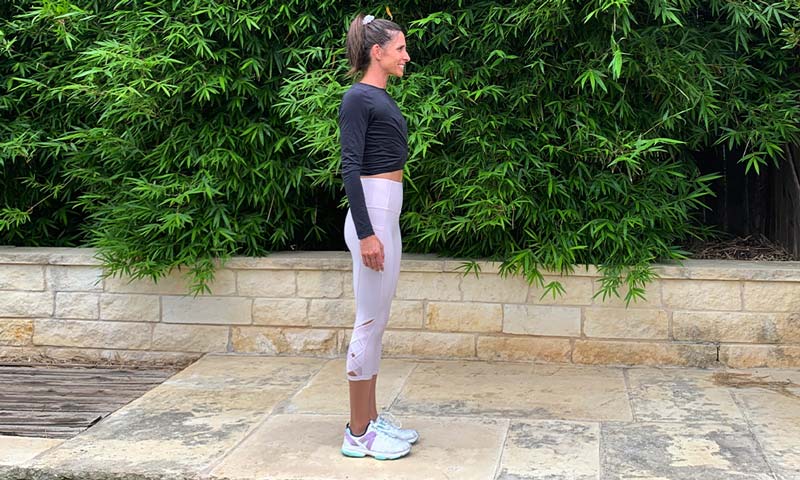
Step 2: Step one foot forward the length of your femur or a few inches further. Land your front foot on the floor with toes facing forward. Keep your hips sagittal.
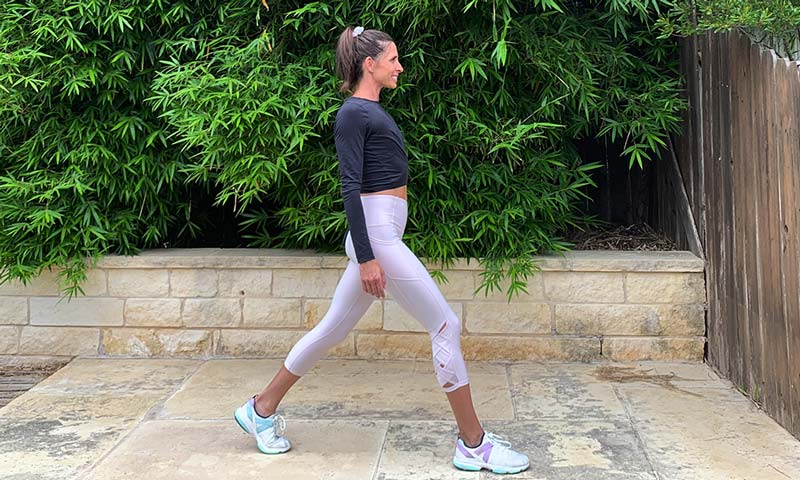
Step 3: Bend your knees to hover above the ground. Track your knee forward, in the same direction as the toes.
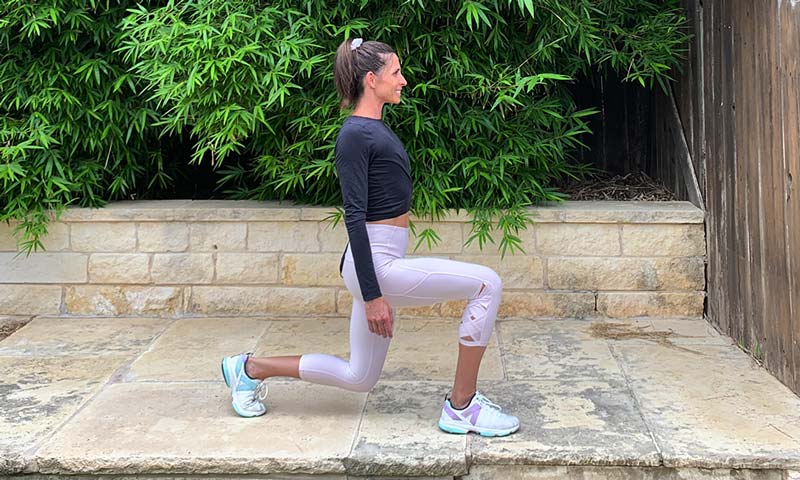
Step 4: Extend your knees and step back to starting position.
To help understand how the exercise should be performed, take a quick peek at this video!
Now that you know the problem, you can start making strides to fix the Forward Lunge: The Knee-Dominant Move You Never Knew You Were Doing Wrong and hopefully avoid knee injury in the future.
Share this Post!

Training Your Body for Its Most Physical Event
by Kim Vopni
Keeping fit during pregnancy is important, but there is an overlooked element that can provide tremendous benefits to you in pregnancy, birth and in your postpartum recovery.
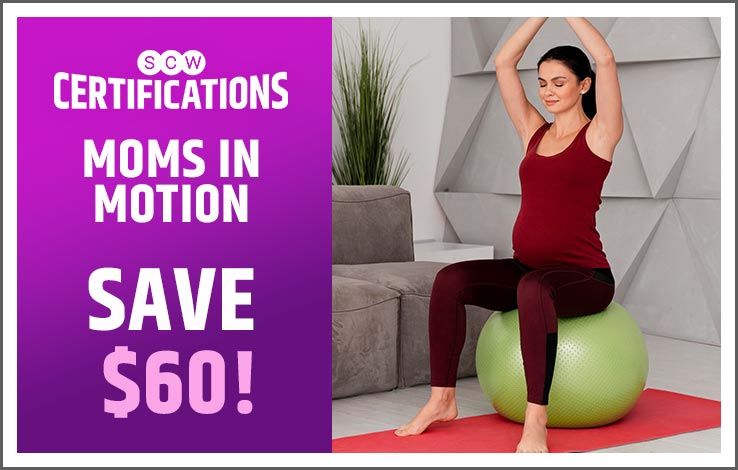 Let’s recall a standard in fitness called the Principle of Specificity. It states the best way to develop physical fitness for your event or activity is to train the body as closely as possible to the way it will be used in the event or activity. Thus, the best way to train for running is to run, for swimming is to swim, and for weightlifting, lift weights.
Let’s recall a standard in fitness called the Principle of Specificity. It states the best way to develop physical fitness for your event or activity is to train the body as closely as possible to the way it will be used in the event or activity. Thus, the best way to train for running is to run, for swimming is to swim, and for weightlifting, lift weights.
So, what about birth?
Childbirth is a very physical event. Maybe you’ve heard the saying ‘birth is like a marathon’? Would you train for a marathon? Of course, you would! And giving birth is really more like 4-6 marathons which makes it even more important to prepare both mind and body.
You can prepare your body for baring a child using exercises that mimic labor and birth positions. During pregnancy, when you move in ways that are similar to the demands of labor using birth-specific exercise, you will prepare your body for when you are actually in labor and be better able to handle the physical demands of certain positions.
Here are a few to choose from:
Hovering
 Hovering or tall kneeling is a great pelvic floor exercise, a good glute builder, and a great inner thigh toner. It encourages space in the pelvis for birth and prepares you for labor and birth positions that have you kneeling or on all fours.
Hovering or tall kneeling is a great pelvic floor exercise, a good glute builder, and a great inner thigh toner. It encourages space in the pelvis for birth and prepares you for labor and birth positions that have you kneeling or on all fours.
Start by kneeling on your mat with your knees a little wider than hip width apart. Touch your toes behind you, put your hands on your hips and rest your bum on your heels to start. Inhale and expand your ribs, your belly and your pelvic floor. Then exhale to engage your core and pelvic floor (you can imagine picking up a blueberry with your vagina and anus) as you lift your gluteals away from your heels and come up to a tall kneeling position. Inhale as you lower back down. Repeat 10x and do 1-2 sets/per day.
Hovering is also a great restorative exercise postpartum. I generally recommend adding this exercise back in at around week 5 or 6 and you can modify the width of your knees depending on how you feel.
Side Lying Bent Leg Raises
 The side lying birth position is one of the best in terms of protecting the perineum from tearing. It can also be used to slow things down if labor is progressing really quickly. You can be fully on your side or you can prop yourself up with pillows on the bed to angle your body slightly and let gravity help out a bit too.
The side lying birth position is one of the best in terms of protecting the perineum from tearing. It can also be used to slow things down if labor is progressing really quickly. You can be fully on your side or you can prop yourself up with pillows on the bed to angle your body slightly and let gravity help out a bit too.
Lie on your side with both knees bent and ensure you have a gentle curve in your low back. You want your pelvis to be as close to neutral as possible.
Inhale to expand, then exhale to engage your core (remember those blueberries) as you lift the top leg up. Inhale as you lower back down.
In labor, you will have someone holding your leg for you, but it still helps to have strength and endurance in a position that you may be in for a while.
You can also play around with the angle of your top leg – when you internally rotate your leg (the knee points slightly downward and the foot is more up) your pelvis actually opens a bit more which is key during labor and birth. Postpartum I would add this exercise in at week three or four.
Pelvic Rocking
 If you don’t already have one, invest in a stability ball (also called a birth ball or an exercise ball). You can use it during pregnancy, in labor and postpartum, as it is one of the best ways to calm a fussy baby.
If you don’t already have one, invest in a stability ball (also called a birth ball or an exercise ball). You can use it during pregnancy, in labor and postpartum, as it is one of the best ways to calm a fussy baby.
Sit in a neutral posture on the ball – neutral meaning you have a gentle curve in your low back and can feel the ball pressing into your perineum. You can place your hands on your hips or on the sides of the ball. Keeping your upper body still, start to practice belly dance movements: gently thrust your hip to the left, then the right, then the left, then the … you get the picture. You can do this quickly or slowly, but make the movement come from the pelvis, not the upper body. Now, come back to neutral and tuck the pelvis under and then reach the sitz bones back, then under, then back … and so on. Keeping mobility in the pelvis is key and you take this movement into your labor. For postpartum, this exercise is best saved until 6 weeks or more once the perineum has healed and you feel comfortable sitting on the ball.
By training for your childbirth marathon, using specific exercises for labor and birth, you will be stronger during your pregnancy, optimize your birth and support a smoother return to function postpartum.
For more information regarding strengthening the pelvic health and topics related to women, visit the Pelvienne Wellness website to see the programs being offered.
Share this Post!

Incorporating Technology into Your Clients and Business
by Ethan Parker
As new tech is becoming more and more prevalent in the fitness industry, an increasing challenge owners are coming up against is how to properly integrate the technology into all aspects of the client life cycle. Main questions we as business owners ask are: What metric is most valuable to my business, how does it affect my bottom line and how can I use technology to ensure that members, both new and current, are getting results?
 The most useful metric to any fitness business owner is individualized reporting to understanding client’s health and a roadmap to achieving their goals. Probably the most helpful way is through body composition analysis, which can conveniently be incorporated into existing client bases. A body scale can only provide so much information and what it does provide can easily frustrate the user. Learning what the body is composed of, muscle, fat (subcutaneous & visceral), water, etc. provides the ability to dive into clients lives and create opportunity to engage with clients at the right time, whether at home or the gym. No one quits the gym who’s getting results. Quantifiable, efficient data, at scale, is needed to properly orchestrate this.
The most useful metric to any fitness business owner is individualized reporting to understanding client’s health and a roadmap to achieving their goals. Probably the most helpful way is through body composition analysis, which can conveniently be incorporated into existing client bases. A body scale can only provide so much information and what it does provide can easily frustrate the user. Learning what the body is composed of, muscle, fat (subcutaneous & visceral), water, etc. provides the ability to dive into clients lives and create opportunity to engage with clients at the right time, whether at home or the gym. No one quits the gym who’s getting results. Quantifiable, efficient data, at scale, is needed to properly orchestrate this.
Now that you’ve determined how to see “into” your clients, the next layer is figure out how to incorporate it financially in order to maximize sales and marketing. First, data needs to be injected into the existing client base. After 60 days of data, reporting can be generated that shows hard, unbiased validation of your coaching and programming. If you can show progress during the prospects first interaction; the results of your gym as a whole including results from your PT clients is powerful enough to influence the higher end purchase, as well as show the capability and care you take to ensure progress from your members.
It is very important to help the client understand the importance of this technology during the initial interview. Often weight loss goals are in terms of a number they’d like to get back to, or a certain number of pounds they want to lose. Digging into the true motivation behind this is key. If John Doe wants to lose 50 lbs, where did that number come from? Is this a weight he’s been at in the past he was happy with? Did a doctor assign this number? Does he recall a time with less pain? Better sleep? More energy? When you really break down the client’s motivation, they come to the understanding this goes beyond the number on the scale. With body composition analysis, they are now aware of the importance of muscular balance, controlling stress levels, recovery and other important components of accomplishing their true goal. Once this is established, you simply need to ask, “How do you plan to monitor this progress? What is your measuring stick?” That becomes a much harder question to answer.
Luckily there are non-invasive, low cost options available to effectively measure a client’s body composition on an ongoing basis. The Evolt 360 delivers a guideline of lean body mass, body fat mass & percentage, skeletal muscle mass, visceral fat level, hydration, fitness age accumulating in an overall meaningful and personalized fitness score. Integrating this technology will not only keep your client on track with their wellness and fitness goals but will help you to increase retention, create higher lifetime value from each customer and quantifiably change people’s lives.
To learn more about EVOLT 360 and understanding what body scanning does, visit their website and find out how your clients and business can be seen from the inside out.
Share this Post!

My Fitness Journey From Fonda Days To Covid Days
by Shá Ryan
Aerobic workouts began decades ago and have progressively changed and grown throughout the years. None of us expected a worldwide pandemic, creating havoc everywhere, including the fitness industry. After all the gyms and health clubs closed due to the COVID-19, my 40-year career as a fitness instructor came to a screeching halt. What now? How do I fill my time?
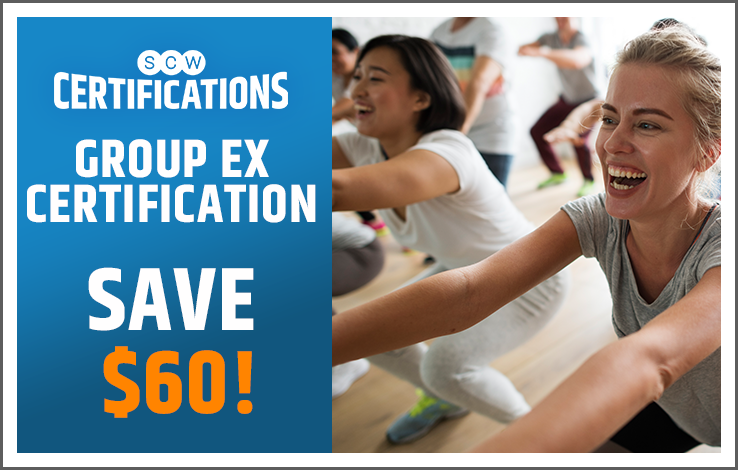 Watching HGTV reruns got old fast so I decided to spring clean–it was Spring after all. While purging piled up paperwork in my rolltop desk, I ran across a Body by SHÁ (Super Heart-y Aerobics) flyer from my “aerobics” days. Talk about a walk down memory lane. . . 1979, the year, Jane Fonda and I both started teaching in Southern California. It was also the year I gained 30 pounds from my second pregnancy and couldn’t fit into my jeans. (I only mention this because it’s how I started my 40-year fitness journey.) So, after throwing myself a short pity party, I decided to lose weight by taking a Jazzercise class like the one I’d seen on TV. Unfortunately, the closest class was 60 miles away. I settled for a jazz class at a nearby gym. Turns out that the ladies in class didn’t want to become professional dancers, they just wanted to get in shape. One-by-one everyone dropped out and class was cancelled.
Watching HGTV reruns got old fast so I decided to spring clean–it was Spring after all. While purging piled up paperwork in my rolltop desk, I ran across a Body by SHÁ (Super Heart-y Aerobics) flyer from my “aerobics” days. Talk about a walk down memory lane. . . 1979, the year, Jane Fonda and I both started teaching in Southern California. It was also the year I gained 30 pounds from my second pregnancy and couldn’t fit into my jeans. (I only mention this because it’s how I started my 40-year fitness journey.) So, after throwing myself a short pity party, I decided to lose weight by taking a Jazzercise class like the one I’d seen on TV. Unfortunately, the closest class was 60 miles away. I settled for a jazz class at a nearby gym. Turns out that the ladies in class didn’t want to become professional dancers, they just wanted to get in shape. One-by-one everyone dropped out and class was cancelled.
Staring at the pre-pregnancy jeans in my closet, a light bulb in my brain turned on. I danced and practiced gymnastics growing up, was fairly athletic, and had a business degree. I’d start my own fitness exercise business. Sure, I had no formal training, but who did? I researched information at the library (pre-Google), then approached the gym manager with a proposal to teach a “dance exercise” class in place of that jazz class. He jumped on my offer, not asking for the credentials that I didn’t have anyway.
Planning that class took hours, so you can imagine my disappointment when not one person preregistered. Without anyone signed up, I decided I was going to attend a party that night and wear my velour top and new, bigger-size, skin-tight Gloria Vanderbilt jeans (you remember the kind you have to zip up by lying down!)
On the way to the party, guilt got the better of me. I stopped by the gym—just in case. To my shock, there stood 12 ladies ready to “get their Jane Fonda on.” Too late to go home and change into my leotard and stirrup tights, so I taught my first-ever class in bare feet (picture it) doing Rockettes’ kicks in those no-Spandex jeans.
With that surprising success, I decided fitness knowledge was needed. Fast forward to continuing education and certification days—Kenneth Cooper, a pioneer of aerobics, was one of my first workshops. To my amazement, I learned a lot more than I thought I already knew. I started signing up for more training, like exercise physiology at a local university and soon after, got my first certification.
 It didn’t take long for me to discover SCW Fitness Education and attend my first SCW MANIA®. That experience was AMAZING. Founder and CEO, Sara Kooperman, is a dynamo! Her organization continues to evolve, especially transitioning from in-person to virtual education due to coronavirus, providing fitness professionals with cutting-edge research and knowledge in the industry. My most recent experience at MANIA® included completing the SCW Active Aging certification. Working with this population is extremely important since 60+ year-olds will surpass one billion soon! I love teaching mature adults, not only because I can relate to their aches and pains, but I have to practice what I preach in order to stay active.
It didn’t take long for me to discover SCW Fitness Education and attend my first SCW MANIA®. That experience was AMAZING. Founder and CEO, Sara Kooperman, is a dynamo! Her organization continues to evolve, especially transitioning from in-person to virtual education due to coronavirus, providing fitness professionals with cutting-edge research and knowledge in the industry. My most recent experience at MANIA® included completing the SCW Active Aging certification. Working with this population is extremely important since 60+ year-olds will surpass one billion soon! I love teaching mature adults, not only because I can relate to their aches and pains, but I have to practice what I preach in order to stay active.
Throughout the years, like SCW Fitness, I’ve adapted to the many changes in our industry. From teaching in banks, on beaches, and in churches to universities and state-of-the-art fitness centers. I’ve taught all ages and fitness levels in classes ranging from step to barre. Music sources have switched from 8-track to downloaded music (thank goodness for Power Music.) Choreographed routines have taken full circle, from simple to complex and back to simple and from typewriter to computer. Even marketing for classes, especially funky names have developed in order to gain participants (my favorite, anything “+” fusion.) No matter the transformations, I’ve had an absolute ball with all my experiences!
Throughout the years I’ve had the opportunity to be involved in a variety of health and fitness opportunities like choreographing/emceeing/filming the fitness portion of seminars and commercials, been interviewed about fitness on local TV, organizing and hosting a fitness program for instructors and writing a study on the differences in exercise shoes (fun fact: Reebok debuted the first women’s aerobics shoe, the Freestyle, in 1982.)
My teaching career has rocked and jumped along for 40 years, starting with bare feet and (I admit) thong leotards, to moisture-wicking attire and ergonomically-designed athletic shoes and circling back to teaching barefooted again; until the big shutdown. I did my own routines for a while and then started taking virtual classes. This reminded me what a friend told me: “Instructors can lead great, but you can’t follow worth a d***!” He was right. I’m a terrible follower—too many years of teaching dance and fitness, I guess.
If nothing else, my perseverance through the years of experience has taught me to embrace change. This pandemic presented new opportunities like attending SCW Live Stream MANIA® and learning how to use Zoom, directly from my living room in my pj’s!
I’m a people person, however, and I miss my fitness family. So, when the gyms reopened not too long ago with masks, social distancing, and other protocols in place, I was one of the first instructors “back at it.”
If anyone had told me I’d be teaching fitness for four decades 40 years ago…, (well, you know the rest). Who knows how much longer I’ll be teaching; but, hopefully, with false teeth in place and cane in hand. Maybe I’ll even be in the Guinness Book of World Records as the oldest-ever group fitness instructor—or, at the very least, I’ll be discussing fitness with someone in the “home.” My advice to all you younger fitness pros: you’ll never be too old to keep learning and trying new things (but hopefully without a mask and, heaven forbid, a thong leotard!).
Share this Post!

Success Factors for Weight Loss
by Tricia Silverman, RD, LDN, MBA
Smart weight loss strategies that work for you are your success factors. When you’re having success, it’s easier to stick to your wellness plan. If your weight starts creeping up, make sure you implement your success factors. Investing in effective weight loss strategies results in amazing dividends such as feeling better, losing or maintaining weight, and feeling more in control. My clients and those attending my group programs have done so well with finding and using these success factors! I wish the same for you!
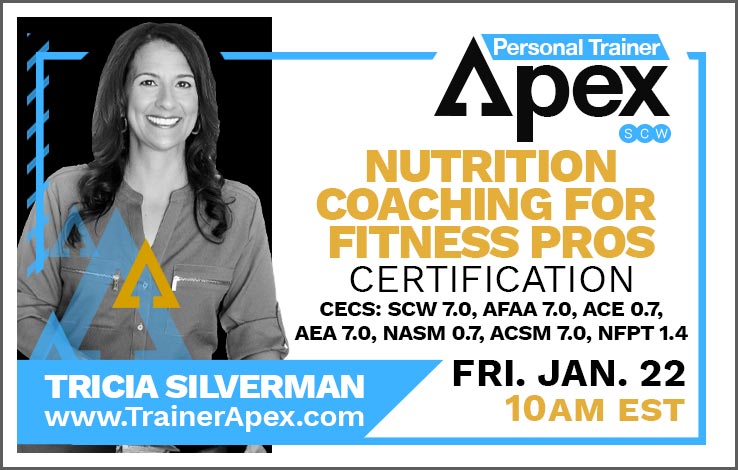 Success Factor #1 – Avoid or Limit Trigger Foods
Success Factor #1 – Avoid or Limit Trigger Foods
Are your trigger foods holding you back from weight loss? Do you know your trigger foods? They are different for everyone. Mine are dry cereal, crackers, candy, and other sugary treats. When I start eating these, it’s often hard to stop which can get in the way of my weight management goals. Chocolate is a huge trigger for many people. One client would come home from work and eat a popular chocolate candy. Once she had her chocolate fix, she started craving another fix … can you guess which type? Salt! She would drive to fast-food restaurants to satisfy her salt craving. Once we got her off the chocolate candy, she no longer craved the salty food.
What about you? Are there certain trigger foods that lead you down a slippery slope? Perhaps they are even healthy foods, like peanut butter. Consider drawing up a list of your trigger foods and commit to staying away from these foods while you are trying to lose weight. Or, if it’s easier, give yourself a specific time frame (one or two weeks to start) when you won’t eat your trigger foods. See how you feel and how it impacts your weight. Perhaps once you feel more in control, you can start adding these foods back in with portion-sized amounts.
One thing to remember is that some of these trigger foods, like sugar, are highly addictive and light up the brain, igniting our reward center, so we want more. The combination of salt, sugar, and fat can be particularly tricky for many of us. Think about restaurant food, and the appetizers and meals and desserts. These foods create memories when we eat them, so we keep seeking them out, and return to the restaurant to get another fix. The best bet is to limit trying new sugary, salty, fat-rich, ultra-indulgent foods.
Success Factor #2 – Eat More Mindfully
 “Do we eat too much?” Horace Fletcher posed this question over 100 years ago and answered it by saying that nine out of ten doctors say “Yes.” We’re still eating too much and even more than in the early 1900s. However, the wisdom of Horace Fletcher may help you to enjoy your food a bit more. In his book The A.B. – Z of Our Own Nutrition, he stated that “Proper mastication and insalivation (mixing with saliva), give your sense of taste far greater gastronomic enjoyment than you have ever before had.” He called this “economic nutrition,” but we call it mindful eating. As you chew your food more, you slow down the rate and amount you eat.
“Do we eat too much?” Horace Fletcher posed this question over 100 years ago and answered it by saying that nine out of ten doctors say “Yes.” We’re still eating too much and even more than in the early 1900s. However, the wisdom of Horace Fletcher may help you to enjoy your food a bit more. In his book The A.B. – Z of Our Own Nutrition, he stated that “Proper mastication and insalivation (mixing with saliva), give your sense of taste far greater gastronomic enjoyment than you have ever before had.” He called this “economic nutrition,” but we call it mindful eating. As you chew your food more, you slow down the rate and amount you eat.
Mindful eating is one of the best practices you can learn to help control your eating. I think the practice of yoga supports mindful eating. A lovely participant in one of my nutrition series classes came in laughing one week. When I asked what was so funny, he told me that through mindful eating for one week he had lost four pounds. The habit he focused on was not watching the television while he ate.
You can gain weight eating healthy food, too. Quantity matters. Aim for smaller portions combined with mindful eating. Eating mindfully is a conscious effort to slow down the rate at which you eat, chew your food more, tune in to the experience, and to savor every bite.
Success Factor #3 – Avoid “Freakend” Eating
I’ve noticed that way too many people eat pretty darn well Monday through Friday afternoon. They would earn an A or A+ if they were to be graded. This is often followed by unstructured eating that starts with Friday drinks and restaurant meals and continues until Sunday, probably earning them an F. I’d rather they be a B or B+ student every day, having consistency with their healthy eating that weaves its way through the entire week. Some small indulgences can be planned in, but a “cheat day” or complete “freakend” will likely cause you to gain back any weight you’ve lost Monday through Friday. I’ve done the math. Only one day of “freakend” eating can undermine five to six days of healthful eating when it comes to results on the scale.
Success Factor #4 – Embrace Salads and Vegetables
 The sooner you embrace vegetables, the easier losing weight will be and the longer your life will be. An attendee of one of my wellness programs shared with me that he had lost over 100 pounds through a program at his gym. One of the success factors that helped him with his weight loss was switching from sandwiches to salads for lunch. Another attendee at one of my employee wellness programs, manages his weight by eating what he calls “garbage pail lunches,” instead of sandwiches. The lunches are leftovers from home-cooked vegetarian dinners that he dumps over salad greens.
The sooner you embrace vegetables, the easier losing weight will be and the longer your life will be. An attendee of one of my wellness programs shared with me that he had lost over 100 pounds through a program at his gym. One of the success factors that helped him with his weight loss was switching from sandwiches to salads for lunch. Another attendee at one of my employee wellness programs, manages his weight by eating what he calls “garbage pail lunches,” instead of sandwiches. The lunches are leftovers from home-cooked vegetarian dinners that he dumps over salad greens.
Another tactic is to eat a salad before your meals, which may help you take in fewer calories for the entire meal. Fruit can do the same thing. Apples, in particular, are very filling and have been shown to enhance satiety.
This article is an excerpt from my book, Healthy Dividends: Investments in Nutrition, Movement, and Healthy Habits that Pay Off. I’ve collected the strategies my clients have found most successful for them. To learn about the additional success factors for weight loss, please consider reading my book. It is available from SCW here.
If you want to learn more from Tricia, you can find her at the upcoming SCW Live Stream MANIA®, February 26-28th. She will be presenting sessions such as “Food Is & Prevents Medicine” and the ever-popular “Nutrition Panel” with Melissa Layne, Med, Alex Ruani and Gregory Charlop, MD.
Share this Post!
 About the Author, Tricia Silverman, RD, LDN, MBA
About the Author, Tricia Silverman, RD, LDN, MBA
Tricia is a registered dietitian, fitness instructor, wellness coach and author. She is an international virtual and live presenter and specializes in creating and delivering exciting and engaging group wellness programs. She developed and leads the SCW Nutrition for Active Aging Certification. She won the 2016 SCW Boston Fitness Idol contest. She teaches Nutrition Entrepreneurship and Healthy Aging for Northeastern University, and has recently been promoted to a Faculty Lead, where she helps coordinate the Applied Nutrition Program.
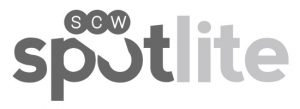
We’re always looking for great content highlighting the newest things in the world of fitness. Please submit your article directly to editor@scwfit.com for immediate consideration!
Give us your feedback on what interests you, and maybe YOU will make it in the SCW Spotlite!
Share Your Thoughts >>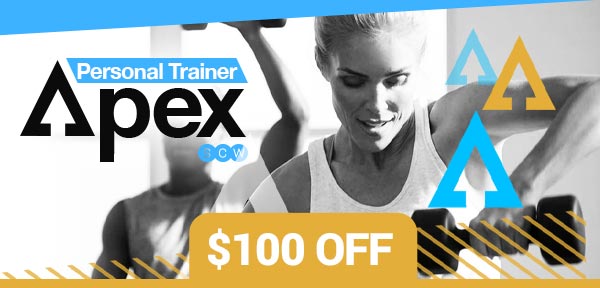
Personal Trainer Apex
January 23-24
Learn More Here
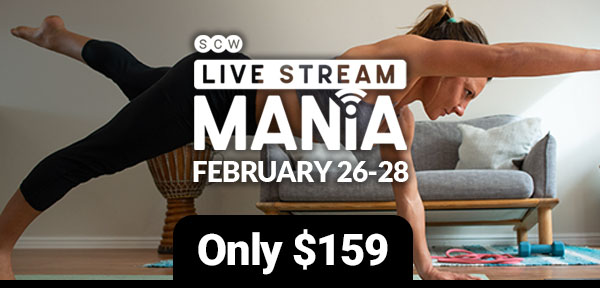
Live Stream MANIA®
February 26-28
Register Here

MANIA NOW $100 OFF
Get MANIA NOW
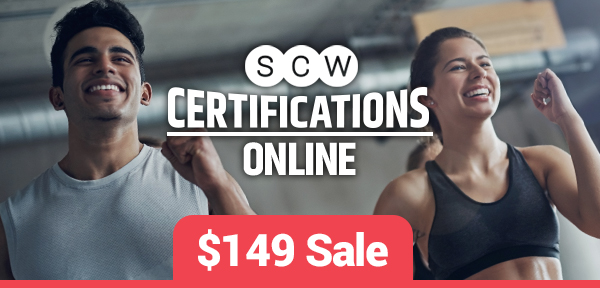
SCW Online Certifications
$110 OFF
Choose Your Cert Here

50% OFF Home Equipment Must-Haves
Shop the 50% Sale Here
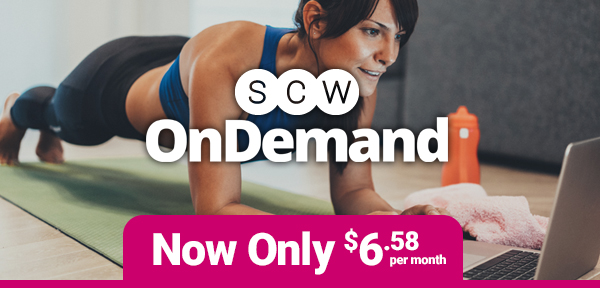
Save $20
SCW OnDemand
Video Subscription
Subscribe & Use Code: ONDEMAND20
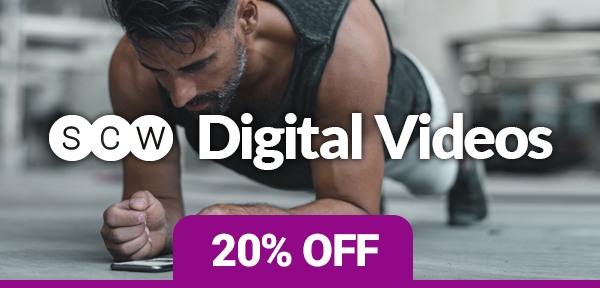
20% OFF SCW Digital Videos
Choose Videos & Use Code: VIDEO20

$50 OFF 20 CEC Video Course Bundles
(Was $139, Now $89) or (Was $209, Now $159)
Choose Bundle & Use Code: VIRTUAL50

FREE Upcoming Webinars From SCW
Register FREE Here
